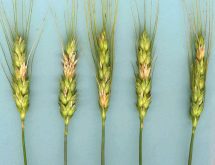Feed barley bids in Western Canada should come under pressure during the harvest period, but are expected to show some strength further out as domestic buyers will need to compete with the higher-priced export market.
“The feedlots don’t need a lot of grain today,” said Jim Beusekom of Marketplace Commodities at Lethbridge, adding that “the cattle are late coming into the feedlots because we’ve had so much grass and the cattle are still out in the pasture.”
Prices in the key Lethbridge feeding area would hover in the $155-to $165-per-tonne range during the harvest period, before strengthening in October and further out, he said.
Read Also

Canadian aquaculture wants farming treatment
Canada’s fish farms want to switch federal portfolios to be under Agriculture and Agri-Food Canada’s eye rather than Fisheries and Oceans Canada’s thumb and be able to grow production.
Once the cattle numbers start to go up in the feedlots, “we anticipate the market will go up,” said Beusekom.
Prices would need to rise in order to compete against the Canadian Wheat Board, he said. The CWB on Aug. 26 increased its pool return outlook (PRO) values for new-crop feed barley to $209 per tonne, up from $143 the previous month.
“At some point the feed market will need to get competitive against (the CWB export program),” said Beusekom. The CWB announced it had already sold 200,000 tonnes of feed barley into the export market in recent weeks due to strong international demand. The CWB had been largely absent from the export market in recent years due to firmer domestic prices.
End-users are currently not willing to pay up to match the values offered by the export market, Beusekom said, but they will need to do so at some time.
But ample supplies of other feed ingredients will limit the upside in the domestic barley market. Beusekom said corn-based dried distillers grains with solubles (DDGS) from the U. S. are currently trading at a similar price to barley, so feedlots are maximizing their DDGS usage at 25 per cent.
Feed wheat and pulse crops with high dockage could also help keep prices down for the livestock feeders, but quality and availability of those crops will still depend on the harvest, he said.















